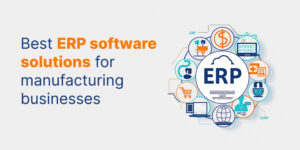
AML software is fundamental in transforming compliance management for financial institutions and reducing manual workloads. In 2017, North America dominated the global market, accounting for 31.31%, which represented $271.8 million in revenue. As the demand for more efficient compliance solutions grows, global market revenue is expected to reach approximately $1.77 billion by 2023. With automated systems doing the heavy lifting, businesses can keep up with regulations more smoothly, freeing up time and resources to focus on other priorities without being stuck by tedious processes.
What is AML Software?
After the invasions of 11th September 2001 and the passing of the Patriot Act, the regulation of anti-money laundering had become the strict rule in most abundant states as most which led to the establishment of the Financial Action Task Force (FATF). The formation of the FATF had the real motivation to combat money laundering incidents, which persuaded many high authority departments to identify, scrutinize, and report obvious money laundering acts to the financial enforcement agencies in each state.
In the United Kingdom, the implementation of AML software has been seen apparently since the reporting of high terror funding attacks and relevant illegalities. Countries with higher rates of money laundering made use of the AML compliance systems within their financial departments and banks just to deter financial crimes. The digitization world has its prominent role in the transforming of manual anti-money laundering compliance to AML software, which otherwise has a more decisive role in combating illegalities.
How AML Risk Management Software Resolves AML Conformance
There are diverse forms of AML software for solving various AML conformance indicators, which are given below in a comprehensive way:
1. KYC-KYB
AML software as KYC and KYB represents the monitoring of potential customers and businesses before onboarding and making partnerships and vice versa. This method requires the scrutinization of their personal credentials, such as social security numbers, ID cards, bank details, and more. The primary objective behind its conduction is to identify high-risk entities in real time and report them to relevant authorities.
2. AML Transaction Monitoring
This software is utilized to detect and report illegal financial conditions that represent terror funding acts and relevant economic frauds. It usually involves the regulations and proceedings that observe financial credentials and detect irregular patterns emblematize of money laundering.
3. AML Screening
AML software is designed in such a way that distinguishes and underlines the PEPs (politically exposed persons), watchlists, and illegal entities by comparing their databases to the original information stored by the regulatory departments in each country.
Functionality of AML Compliance Software

The working frameworks of anti-money laundering software inspect the database of all the blacklisted entities which are involved in laundering the money. All the countries included are also counted for monitoring purposes. A complete SAR (suspicious activity report) is prepared and utilized to detect the concerned parties and spot their whereabouts. The software helps institutions meet daily AML compliance requirements by monitoring reports sent to financial authorities to keep them alert to potential risks. It efficiently monitors large volumes of transactions to remove the need for time-consuming and error-prone manual reviews.
Also Read: Smart KYC in Business: Secure Reputation and Risk Prevention
AML Software in Banking Sector
The considerable growth of digital financial conductions has made it easy for imposters to commit illegal acts, including money laundering and terror funding. In recent times, the need to identify these digital crimes has been felt through online means rather than physical compliance programs. The forming and then integrating of these AML software solutions have resolved not only the significant concerns in banking departments but also in the potential businesses dealing with money on a daily basis.
Manual data scanning, which is often time-consuming and prone to errors, can negatively affect the customer experience. In today’s advanced environment, using manual methods can put businesses at a disadvantage if competitors are utilizing AML software. Transaction monitoring becomes crucial, as software-based scanning is more reliable and efficient than manual processes. AML software can scan multiple data sources, ensuring accurate insights.
What Future Holds? AML Monitoring Software
Due to ongoing technological advancements and the increased tactics by the imposters, financial losses have been seen in abundance. White-collar money laundering and relevant terror funding have been deployed in the banking system and relevant sources of finances. To combat these illegalities, AML software has been introduced by the compliance departments in almost every country to maintain their financial institutions and make their country safe from these financial losses, which ultimately become the only cause of economic default. Therefore, it is advised that the AML software be integrated within potential institutions to stay safe from wrongdoings.
Conclusion
In a complex regulatory environment today, AML software is a must for businesses in order to ensure compliance and to reduce manual workload. Automating tasks such as customer due diligence, transaction monitoring, and reporting, AML software makes operations more efficient, minimizing risks, and providing protection from financial crimes to your organization.






